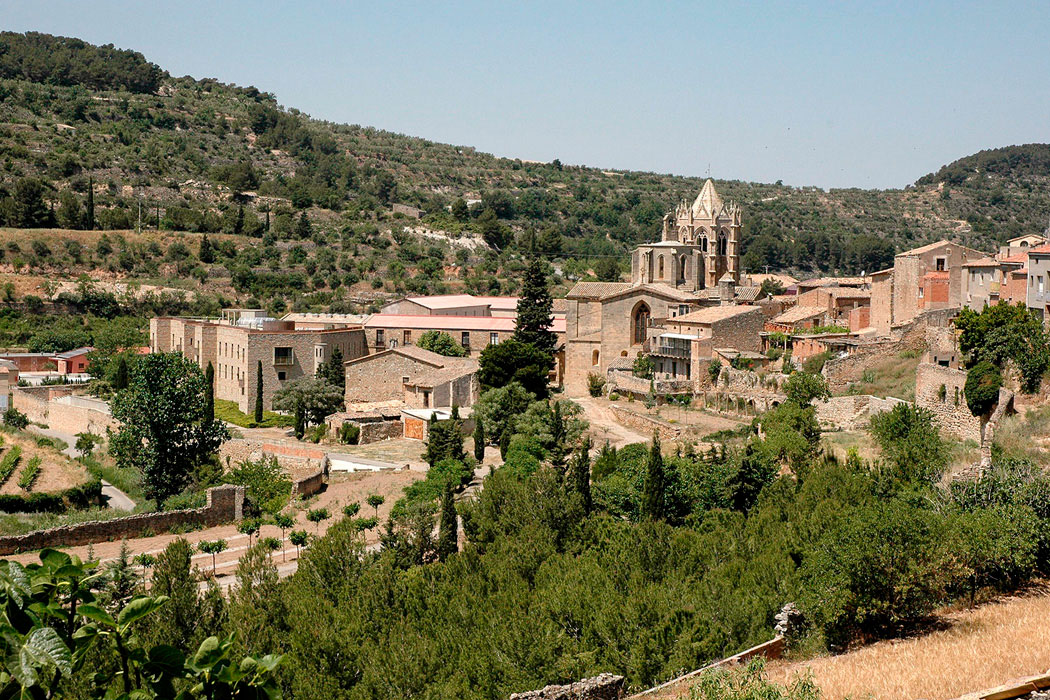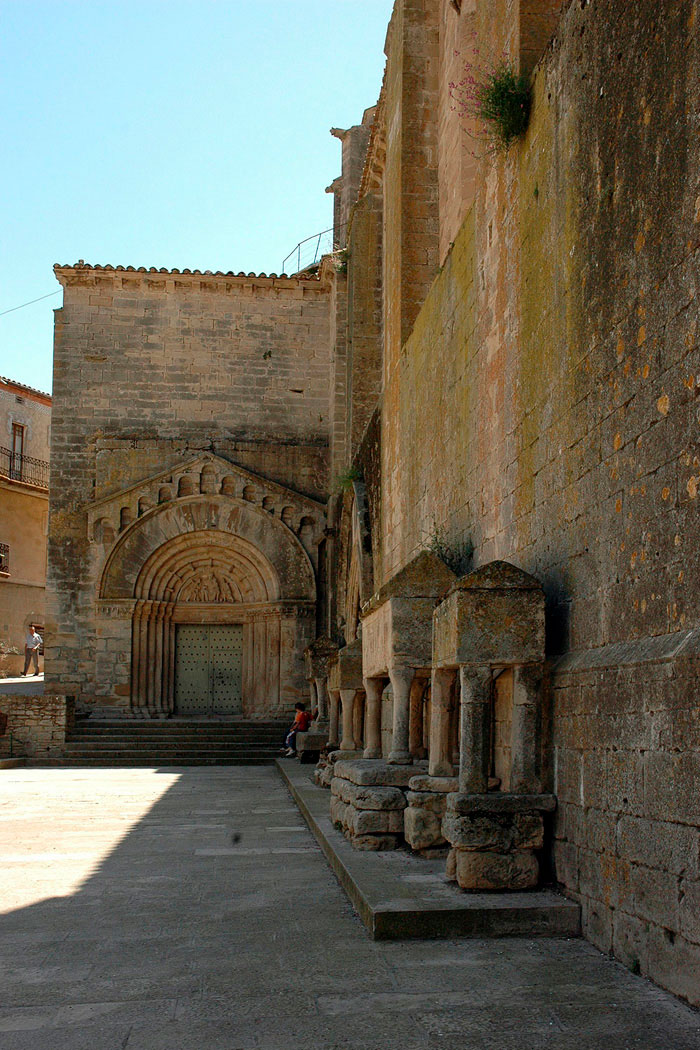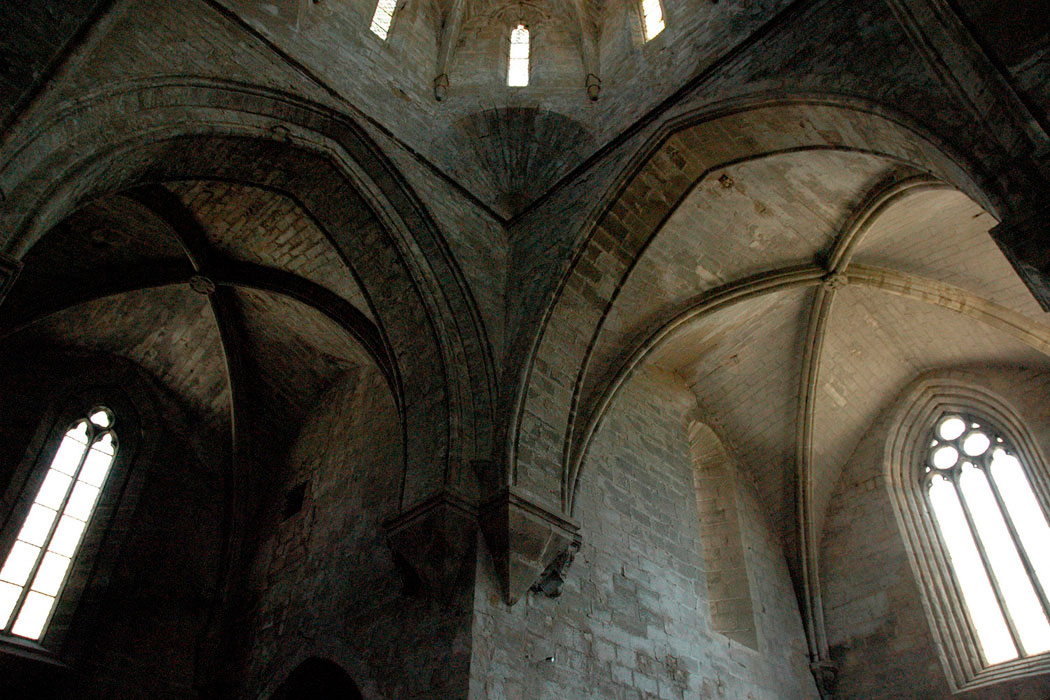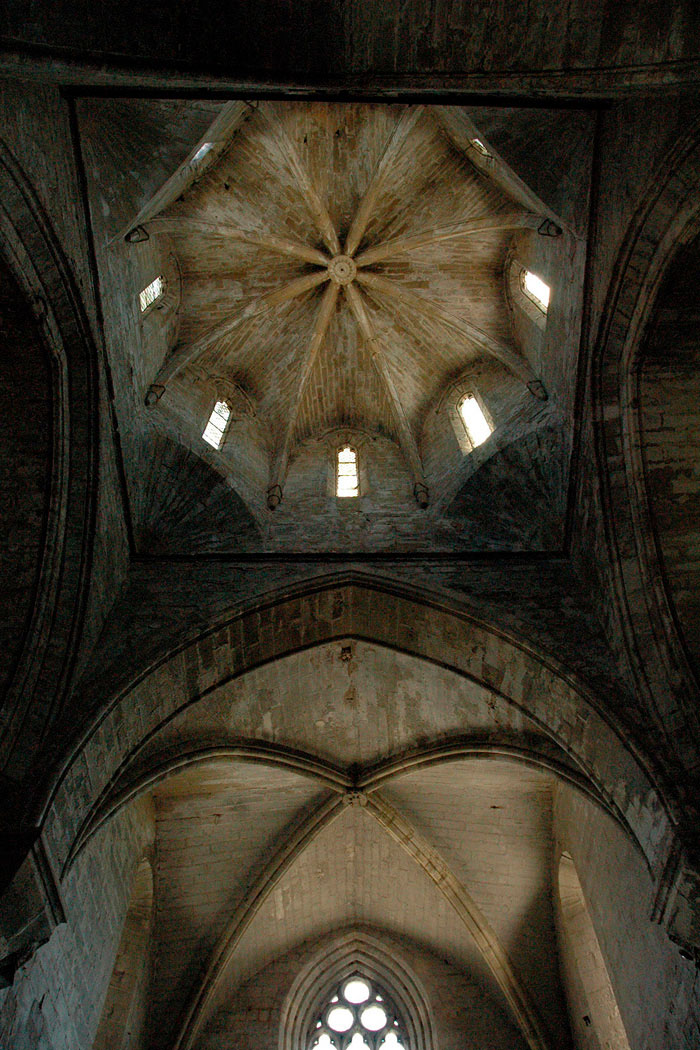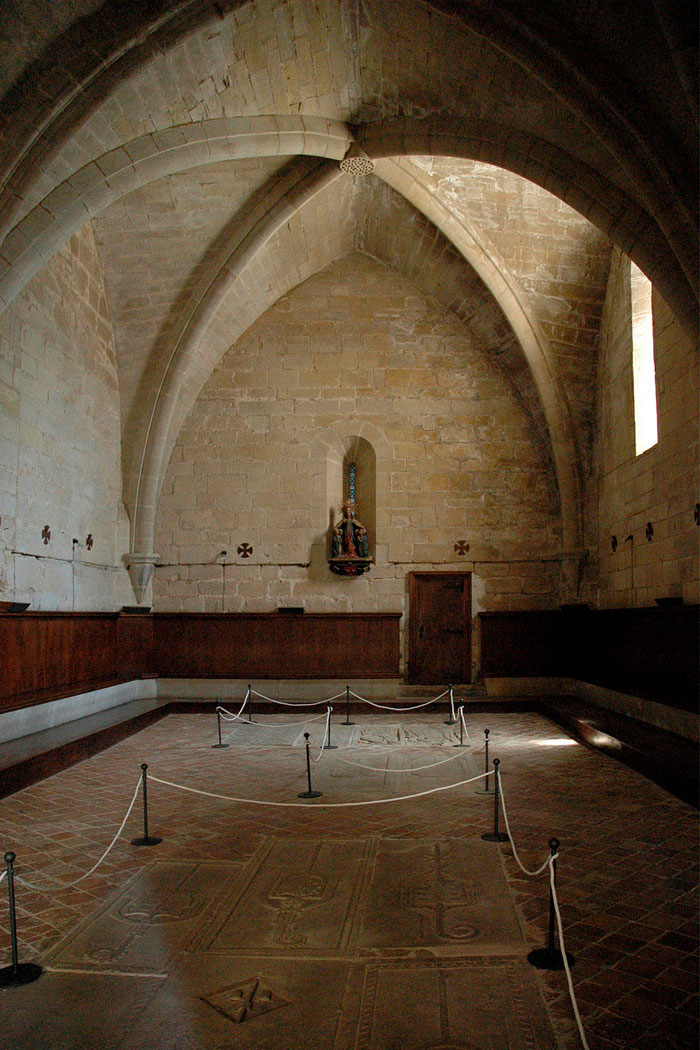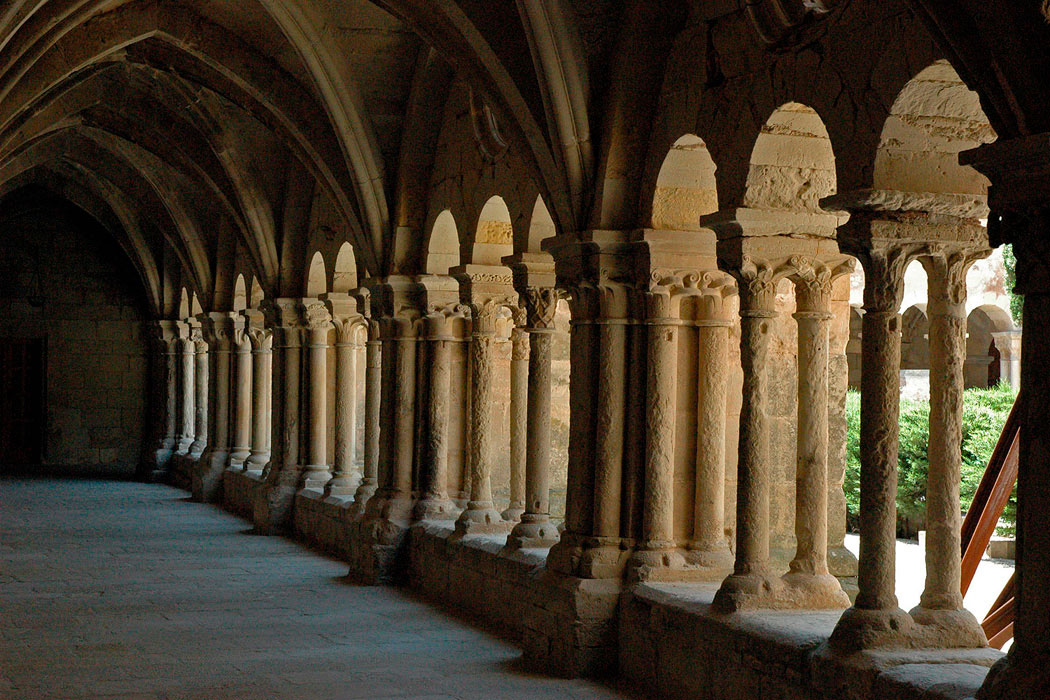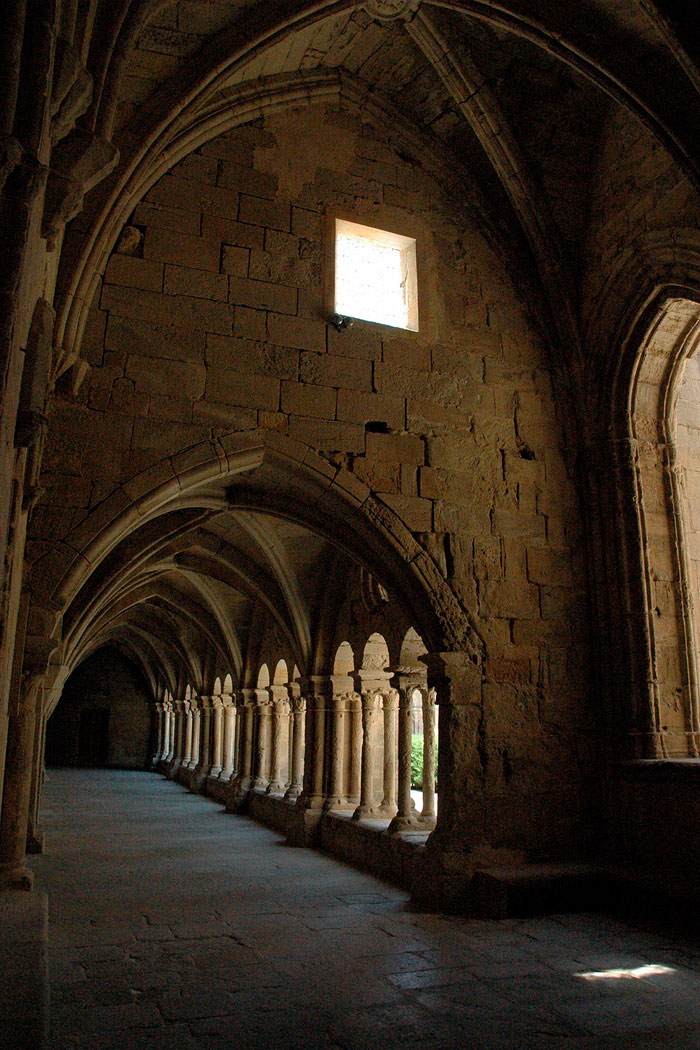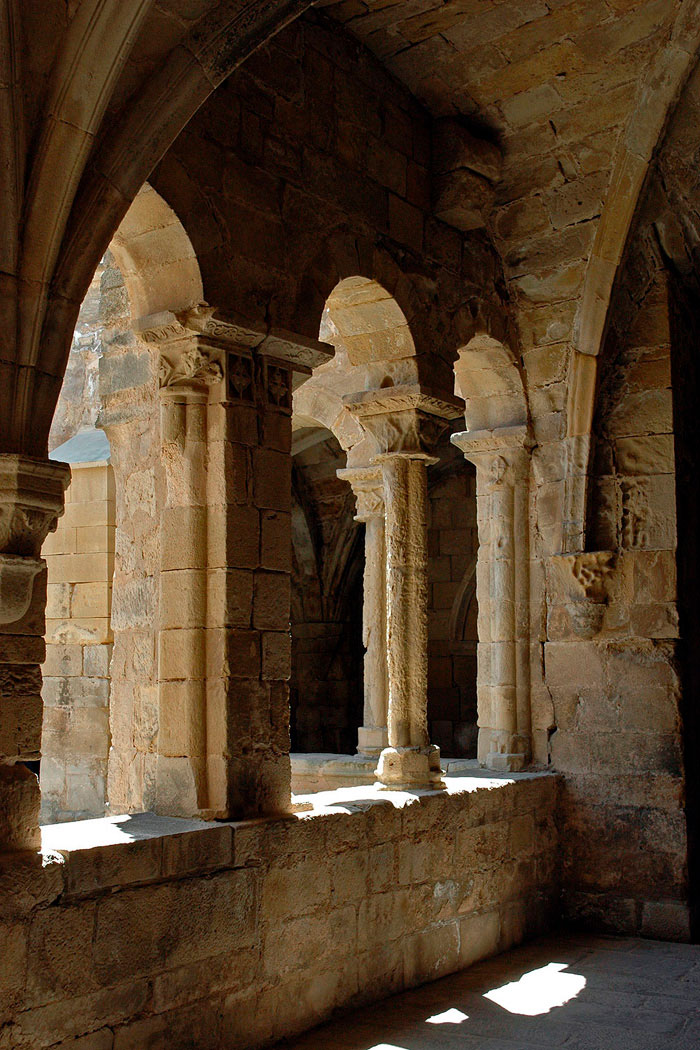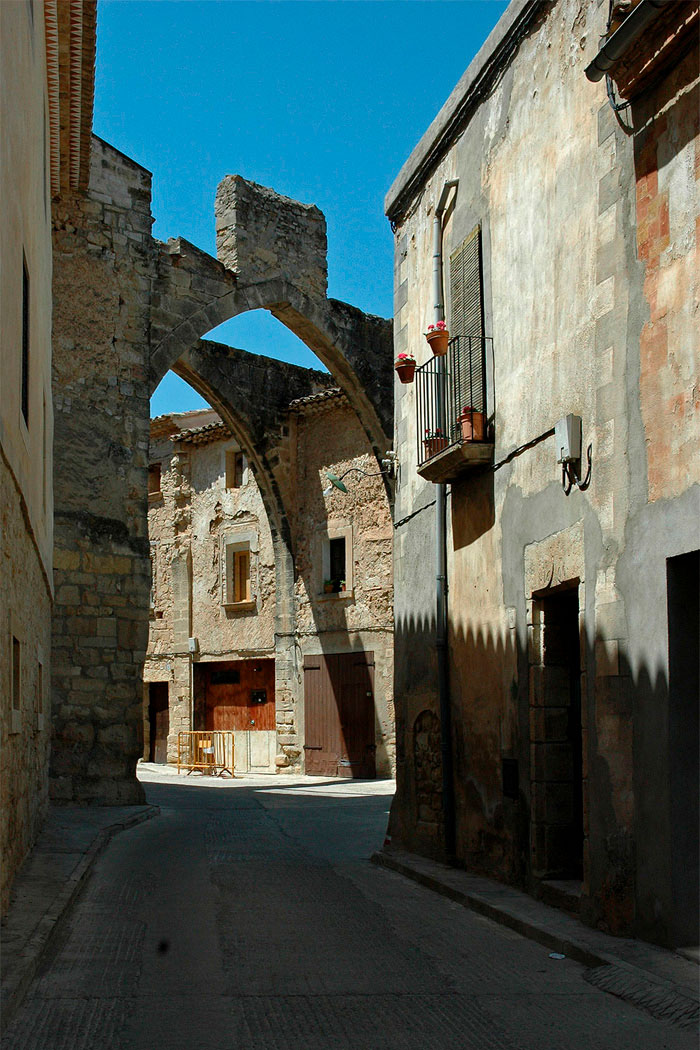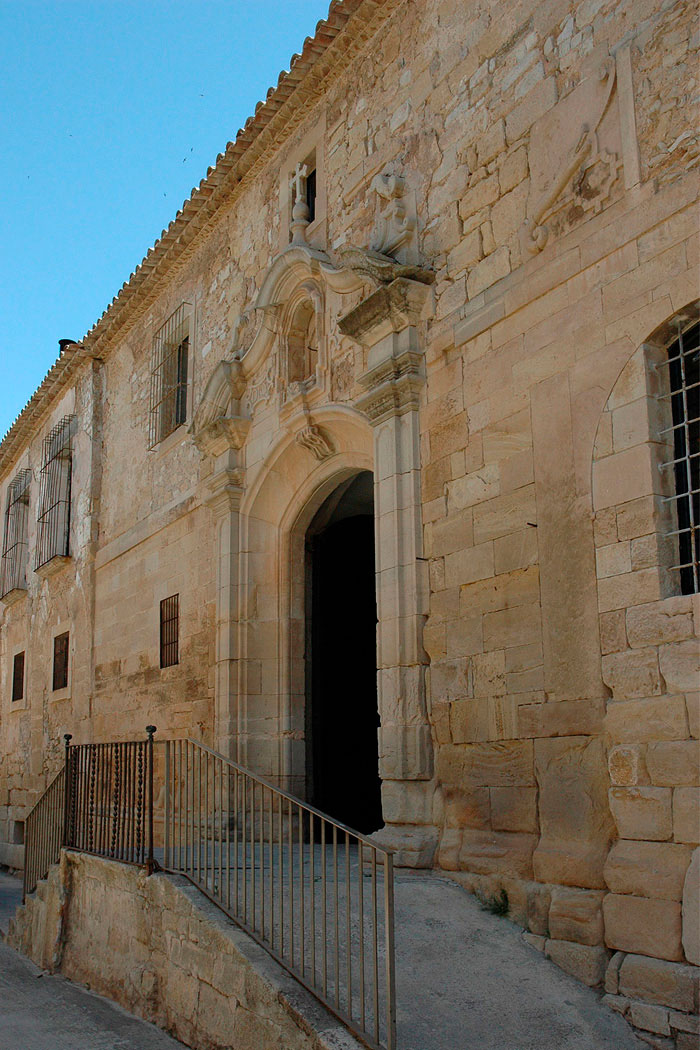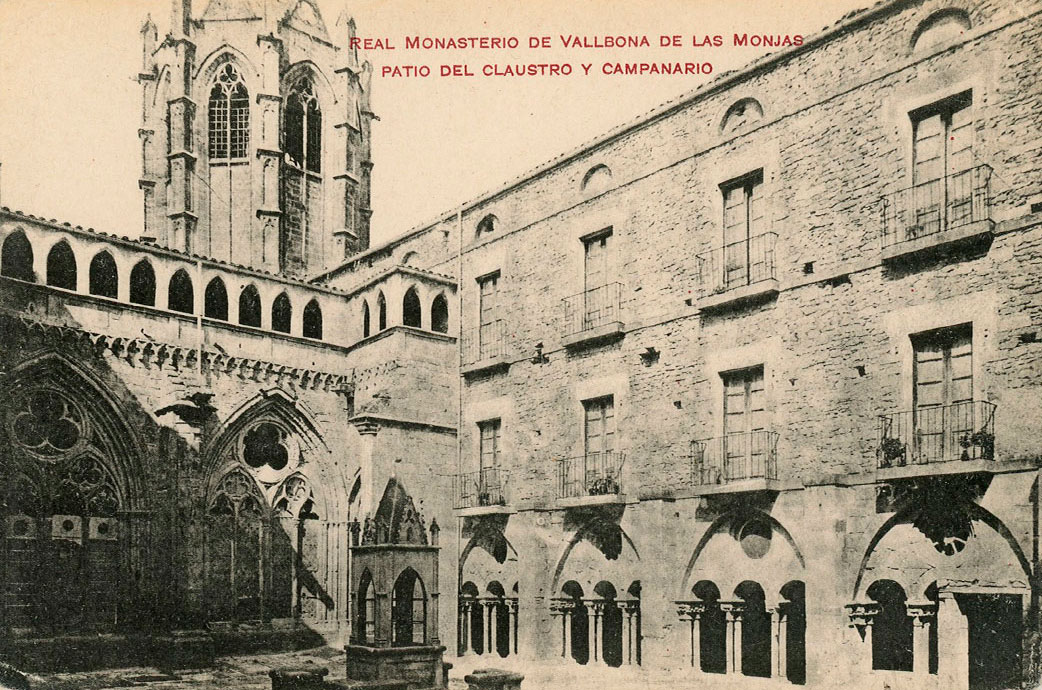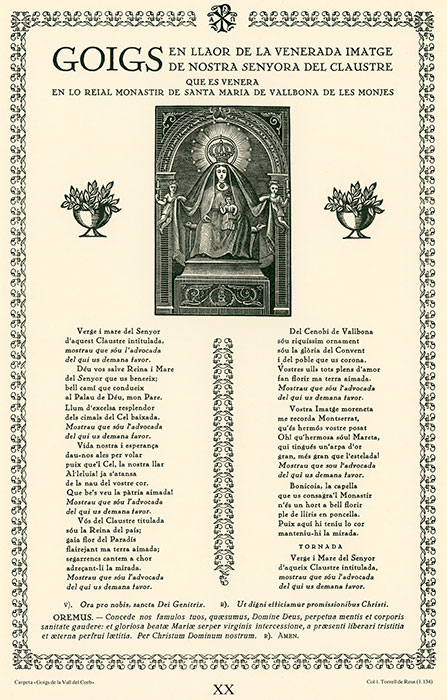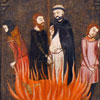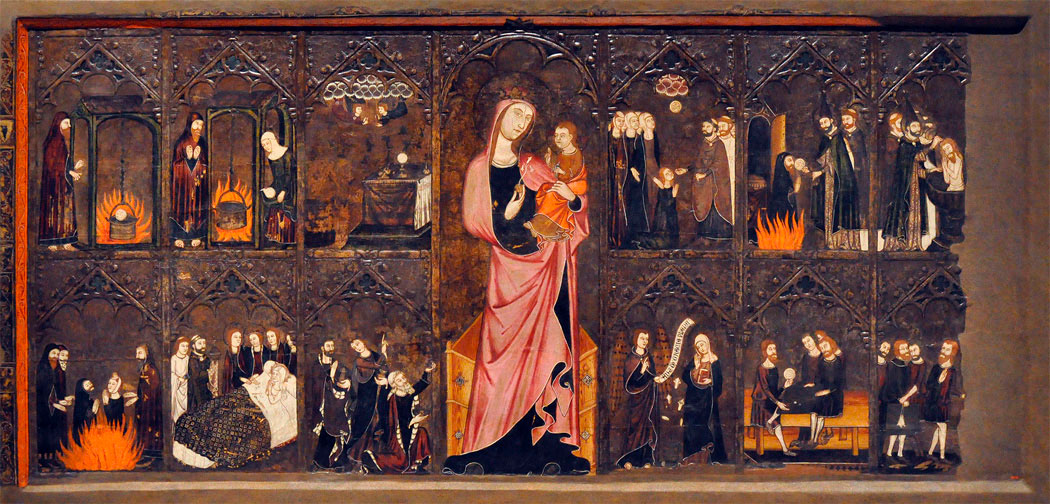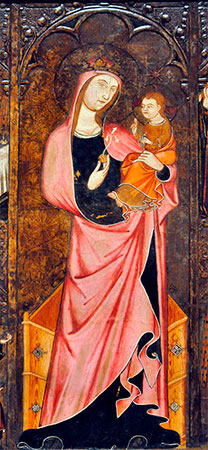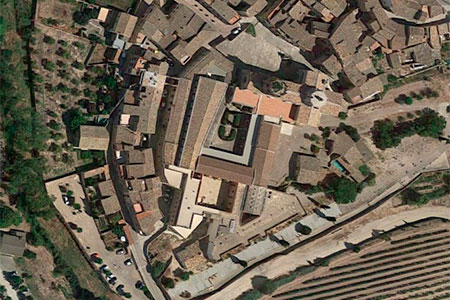Monastery of Santa Maria de Vallbona
Vallbona de les Monges / Colobrers / Vallisbone / Vallebona
(Vallbona de les Monges, Urgell)
The origin of this monastery is related to Ramon de Vallbona, a figure who gathered around him several hermit communities, including Vallbona. In 1157, the Count of Barcelona, Ramon Berenguer IV, donated the site of Sòrboles (La Pobla de Cérvoles, Les Garrigues) to him to establish a male coenobitic community there. At that time, the growing monastery of Poblet, which opposed this foundation in such a nearby place, managed to prevent its development and in 1171 it became its property.
In addition to the community of Cérvoles, Ramon de Vallbona also promoted the communities of Poboleda and Vallbona. There is news of the latter community from 1154, when mention is made of the hermits of Santa Maria de Vallbona, a place that benefited from the protection of Ramon de Cervera, lord of these lands. In 1164, the latter provided the hermits with the castle of Colobrers, located to the southeast of Vallbona, where another settlement was established, so that in this sector he maintained various establishments related to each other. These were small hermit communities of a mixed type, in which there were both men and women.
Ramon de Vallbona gradually moved closer to the Cistercian orbit and finally the Vallbona settlements became a female Cistercian monastery, and in 1171 a General Chapter of the order approved this integration. In 1172, nuns from the female house of Tulebras (Navarre) arrived to help introduce Cistercian customs, although in the future it did not maintain ties with that house.
The development of the Cistercian Order encouraged donations to Vallbona and its growth. In 1176, upon the death of Ramon de Vallbona, the establishment was reorganised and the nuns of Colobrers moved to Vallbona that same year with the abbess Oria at its head, where they began to build the monastery that has survived to the present day. The monks moved to Poboleda. The development of the Cistercian monastery went very fast thanks to the support received from the monarchy and the nobility. In 1198 Pope Innocent III granted it several privileges, among them that of immunity, and at the same time confirmed its properties, the same pope confirmed it again in a bull dated 1201.
On the other hand, it soon began to expand into other centres: possibly Les Franqueses (Noguera) in 1186 and Sant Hilari de Lleida (Segrià) in 1204. The place became increasingly important and in 1228 a chapter of abbesses of the Cistercian Order was held in this monastery. In 1275, the body of Queen Violante of Hungary, wife of Jaume I, who had also collaborated with various donations, was buried here.
The privileges enjoyed by the monastery were the basis of a lordship that turned Vallbona, with the abbess at its head, into a centre of political, legal and economic life that covered a large territory. Thanks to this situation, other religious establishments depended on this monastic centre to a greater or lesser extent: Santa Maria de la Bovera (later Vallsanta) in Guimerà, Pedregal in Tàrrega, Sant Hilari de Lleida, Santa Maria de Bonrepòs and La Saïdia in Valencia. At its peak it had a community of one hundred and fifty nuns.
From its foundation until the 15th century, the monastic buildings were erected, forming a complex that combines constructions from very different periods. As a result of the provisions of the Council of Trent, which prohibited the existence of women's monasteries in isolated places, the community of Vallbona allowed the construction of houses around it, which were occupied by new settlers, forming the population that still exists today.
From the 17th century onwards, the monastery began to decline and the consequent loss of property, income and power, and the conditions of enclosure, which until then had been very mild, were tightened, with the nuns having rooms and enclosures for their own use. In the 19th century, several exclaustrations took place, some due to the Peninsular War (1809 and 1810) and the other in 1835. This was, exceptionally, of short duration and the nuns were able to return to the monastery six months later. Monastic life continues today despite some adverse events, such as the Spanish Civil War of 1936-39, when it suffered the greatest destruction in its history.
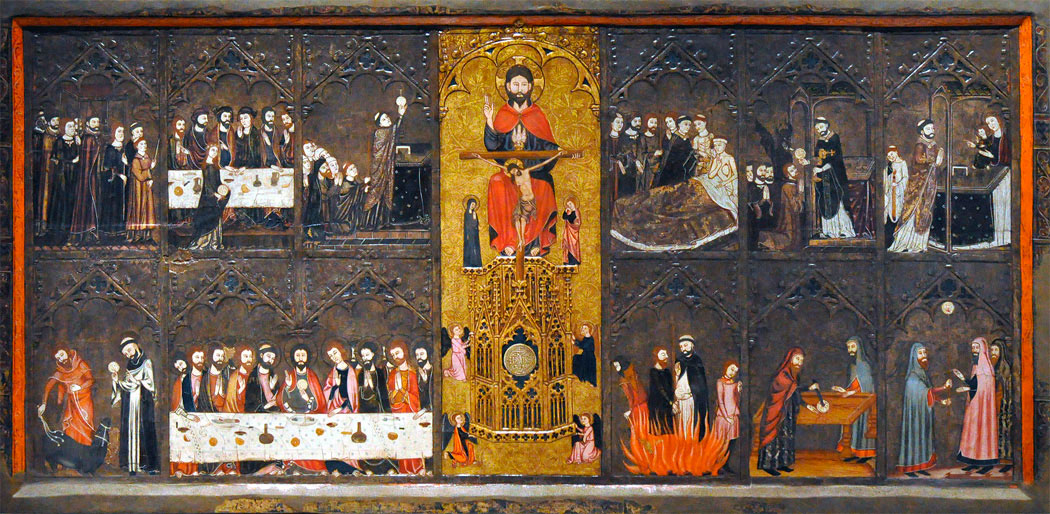
Master of Vallbona de les Monges (Guillem Seguer ?)
MNAC - Barcelona
These are two pieces from the Chapel of Corpus Christi of the monastery of Vallbona. Their author is known as the Master of Vallbona de les Monges, who has been tentatively identified as Guillem Seguer. The chapel was founded by Berenguera d'Anglesola in the first half of the 14th century.
The arrangement of the two panels is unknown; it is generally thought that one might have been placed on the altar (as an altarpiece) and the second, centered on the Virgin Mary, in front of the altar (as an antependium or frontal). Some believe that the two pieces could have been joined together, forming a double-sided altarpiece.
- BERGADA, Francisco (1928). El Real Monasterio cisterciense de Santa María de Vallbona de las Monjas. Barcelona: F. Puig
- CATALÀ I ROCA, Pere (1979). Vallbona de les Monges. Els castells catalans. Vol. VI/2. Barcelona: Rafael Dalmau
- CUSÓ AERRA, Marta (2008). Un monestir cistercenc femení català durant el primer segle borbònic espanyol (1701-1802). Tesi doctoral. Universitat Autònoma de Barcelona
- FORT I COGUL, Eufemià (1965). L’eremitisme a la Catalunya Nova. Studia Monastica. Vol. 7-1. Abadia de Montserrat
- GAVÍN, Josep M. (1987). Inventari d’esglésies. Vol. 20. Segarra, Urgell. Barcelona: Arxiu Gavín
- GONZALVO I BOU, Gener (1997). Santa Maria de Vallbona. Catalunya romànica. Vol. XXIV. Barcelona: Enciclopèdia Catalana
- GONZALVO I BOU, Gener (2002). El monestir de Vallbona de les Monges. L'art gòtic a Catalunya. Arquitectura I. Barcelona: Enciclopèdia Catalana
- GONZALVO I BOU, Gener (2003). El monestir de Vallbona de les Monges. L'art gòtic a Catalunya. Arquitectura II. Barcelona: Enciclopèdia Catalana
- GONZALVO I BOU, Gener (2003). Breu història del monestir de Vallbona. Barcelona: Rafael Dalmau
- LLADONOSA PUJOL, Josep (1957). El Real Monasterio de Santa Maria de Vallbona. Lleida: Ed. Leridana
- LLADONOSA PUJOL, Josep (1973). El monasterio de Santa Maria de Vallbona (Lérida). Lleida: Esc. Provincial
- NAVASCUÉS, Isabel; BELLO, Carme; GONZALVO, Gener (1992). 6315 - Inventari de l'Arxiu del Monestir de Santa Maria de Vallbona. Barcelona: Generalitat de Catalunya
- OLIVER, Jesús M.; i altres (2008). Cister, monestirs reials a la Catalunya Nova. Valls: Cossetània
- PASQUAL, Jaume (1837). Carta del P. D. Jaime Pasqual canónigo premostratese de Bellpuig de las Avellanas al M.I.S. Marqués de Capmany. Barcelona: V. Torras
- PETIT BORDES, Núria (2001). Estudi de les fonts documentals que informen sobre els orígens, la fundació i els primers temps del monestir cistercenc de Vallbona. Urtx, núm. 14
- PIFERRER, Pau (1939). Recuerdos y bellezas de España. Principado de Cataluña. Vol. 2. Barcelona: Verdaguer
- PIQUER I JOVER, Josep Joan (1981). La baronia de Vallbona (notes d'estudi). Lleida: I. E. Ilerdencs
- PIQUER I JOVER, Josep Joan (1990). Abaciologi de Vallbona. Història del monestir. 1153/1990. Vallbona de les Monges
- PIQUER I JOVER, Josep Joan (1993). Vallbona. Guia espiritual i artística. Vallbona de les Monges: Monestir de Santa Maria
- PRATS DARDER, Carme (1990). Apotecaria de Santa Maria de Vallbona. Vallbona: Fund. Roger de Belfort
- SANS I TRAVÉ, Josep Maria (1986). Història del Tallat. Lleida: Virgili & Pagès
- SANS I TRAVÉ, Josep Maria (2002). Precedents i orígens del monestir de Santa Maria de Vallbona (1154-1185). Lleida: Pagès Editors
- SANS I TRAVÉ, Josep Maria (2002). El Llibre Verd del pare Jaume Pasqual. Barcelona. Fund. Noguera
- SANS I TRAVÉ, Josep Maria (2010). El Monestir de Santa Maria de Vallbona. Lleida: Pagès
- SANS I TRAVÉ, Josep Maria (2012). Orígens de Vallbona. Cultura i paisatrge. Núm. 6
- SANS I TRAVÉ, Josep Maria (2018). Sant Ramon, fundador del monestir de Santa Maria de Vallbona (c1120/1130?-1176). Lleida: Pagès Editors
